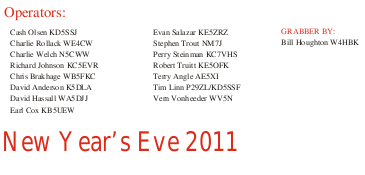 JBOD! FB!
JBOD! FB!
Hi folks,
I'd like to share with you a long-cherished dream, that recently came true, forty years after I came to read about hams using tunnel diodes to make QSOs when I was aged twelve or so:
Finally I managed a first skywave QSO with my PARASAKI-transceiver, an 'all diode' rig: Christophe/F8DZY replied to my very first call on 20m band in REF-contest last weekend. I was running 2mW into a temporary vertical dipole on my balcony. Distance between us is 918km - obviously OM Christophe has excellent ears.
Those interested in the cruel details of my circuit, please find attached a schematic and a photo of the pretty ugly setup. The circuit is designed straight-forward with exception of the parametric VXO, derived from Mike/AA1TJ's famous Paraceiver design. (see http://fhs-consulting.com/aa1tj/paraceiver.html )
The low impedance of the high peak-current tunnel diodes make it very difficult to built a really crystal controlled oscillator rather than an LC-oscillator, synchronized by the crystal more or less, at least on the higher SW-bands. The Parametric VXO provides a crystal-stable, chirp-free signal on expense of an output power of two milliwatts only instead of ten, but with an amazing spectral purity, no need for a low pass filter or such. Of course it sounds pretty cool making a QSO with a 'bunch of diodes' and a parametrically excited crystal, but believe me or not, I'd preferred to bring that full ten milliwatt into the air - on the other hand that approach allowed to tune the rig a bit ( ~ 5kHz/per xtal), which turned out to be much more valuable than a few milliwatts more while being 'rock-bound'.
The receiver in its 'gain-less' version works fine for strong signals - while listening to QRP(p) stations, the moderate gain of the audio amplifier helps a lot. A comfortable frequency shift between receive and transmit is realized by the 5µH inductor at the LO-port of the mixer, with little effect on sensitivity.
Thanks for the bandwidth, OMs, won't bother again you with such mails, unless I make a cross-pond QSO with that rig ( not that likely ) or any skywave QSO with homemade semiconductors ( probably impossible )...
72!
Peter/DL3PB

Our book: "SolderSmoke -- Global Adventures in Wireless Electronics"
http://soldersmoke.com/book.htmOur coffee mugs, T-Shirts, bumper stickers:
http://www.cafepress.com/SolderSmokeOur Book Store:
http://astore.amazon.com/contracross-20
 Oh man, I've been a fan of this rig for many years. I first read about it in the pages of SPRAT. Today I stumbled across what appears to be an on-line version of the instruction booklet prepared by Eric Sears, ZL2BMI. Lots of lore in there. Lots of soul in this rig.
Oh man, I've been a fan of this rig for many years. I first read about it in the pages of SPRAT. Today I stumbled across what appears to be an on-line version of the instruction booklet prepared by Eric Sears, ZL2BMI. Lots of lore in there. Lots of soul in this rig. 











































